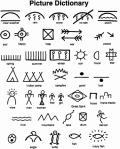A new monster recently emerged from the red sand of the Late Cretaceous period, stretching from Zhejiang to Guangdong, is an intriguing piece of the Ankylosauria family.
The new creature has been named Datai yingliangis by paleontologist Lida Xing and colleagues from the China University of Geosciences, who roamed the Earth during the Late Cretaceous period.
The two specimens excavated from the ancient red sand belong to the Zhoutian Formation in southeastern China and are approximately 90-96 million years old.

“Portrait” of the monster Datai yingliangis – (Graphic from the research team).
Datai yingliangis is a large member of the Ankylosauria family, a diverse group of “armored” dinosaurs known for their distinct shapes and long tails.
This family of monsters reached the peak of diversity at the end of the Cretaceous period, just before the impact of the Chicxulub asteroid ended the age of dinosaurs on Earth.

Partial fossil of Datai yingliangis – (Photo: Xing and colleagues).
According to Sci-News, Datai yingliangis is particularly valuable because it belongs to a period where the fossil record of the armored dinosaur group it belongs to is scarce. Furthermore, it represents a completely new species.
The shape of Datai yingliangis is also quite distinctive compared to other species in its lineage. Notably, it features a four-horned head, with two large horns pointing backward from the skull and two horns on either side of the cheeks.
“Morphologically, it is an intermediate species between older Ankylosaurids from Asia and post-Cenomanian Ankylosaurids” – the authors wrote in their publication in the journal Vertebrate Anatomy Morphology Palaeontology.
The Cenomanian stage is the earliest phase of the Late Cretaceous. Intermediate species, living close to transitional phases of geological periods, always provide important insights into how a lineage evolves and the factors that drive that evolution.
The authors suggest that these two peculiar monsters have the potential to enhance our understanding of the early evolution of this armored dinosaur family.





















































